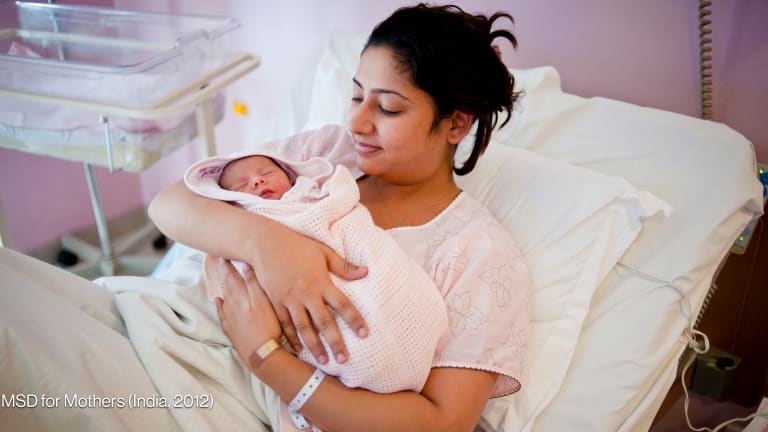
In September, at the opening week of the 72nd session of the United Nations General Assembly, a star-studded event launched Goalkeepers, an ambitious effort to highlight and support progress around the Sustainable Development Goals. Luminaries such as Bill and Melinda Gates, President Barack Obama, and Malala Yousafzai of the The Malala Fund urged progress on 18 vital SDG markers that will advance human health and development.
Goalkeepers is worthy and necessary, but without the ability to conduct accurate, timely, and robust progress measurement, this effort and the SDGs have an unaddressed Achilles heel. In other words, the SDGs need “Scorekeepers” to complement the work of the “Goalkeepers.”
Every year, 130 million babies are born, nearly one-quarter of whom will begin life without any official record of their existence. An even smaller percentage of annual deaths will have any meaningful record.
Billions of people live in countries with weak civil registration and vital statistics (CRVS) systems, which renders many of them effectively invisible — their lives and deaths slipping through the cracks and their experiences leaving no signposts for policymakers to improve services in the future.
Without accurate cause-of-death data, how will we know if our interventions against maternal and child mortality, communicable killers such as tuberculosis and HIV/AIDS, and the growing epidemic of noncommunicable diseases are having an impact? Consider that of the nine health-related SDG goals, five are directly measured by mortality measures that come from CRVS systems.
Worse, weak CRVS systems are especially problematic in many of the low- and middle-income countries, where we most desperately need to see progress. In sub-Saharan Africa, only one country — South Africa — has CRVS system robust enough to systematically provide the data we will need to measure progress. In Asia, Malaysia’s CRVS system has improved rapidly since 2000, according to experts — but other countries in the region are lagging.
In an attempt to make up for this data gap, The Global Burden of Disease project and others use sophisticated statistical modeling. But this analytical work is no replacement for directly measured, country-owned data. Existing estimates may give public health officials a starting point to orient health programs and policies, but country investments in improved CRVS systems are the best long-term way to sustainably determine the needs of national and sub-national populations; measure progress toward the SDG; and determine and assess public health objectives.
Furthermore, CRVS systems have importance beyond the generation of health statistics. At their core, CRVS systems confer legal status, identity individuals at birth, provide official records of vital events throughout the life course up to, and including, death and cause of death. As such, CRVS are also a critical human rights intervention and will be necessary for achieve goals in other areas, particularly to advance the rights of the disempowered. For instance, CRVS systems provide women and girls with official status — a bulwark for social protections, and for conferring and asserting the rights of women to own property and for girls to attend school.
Fortunately, we have a way forward. Because of technological advancements in data collection and processing, for the first time in history it may be possible to count every human life and make the invisible visible. A landmark investment from Bloomberg Philanthropies and the government of Australia has established the Data for Health initiative, which is working in 20 countries, representing 1 billion people, to make improvements in CRVS systems. In addition, regional efforts such as the Africa Programme for Accelerated Improvement of Civil Registration and Vital Statistics and the Asia-Pacific Decade of CRVS are responding to the increasing demand for technical assistance and support to improve CRVS systems.
Over the past 18 months, Vital Strategies and our partners in the Bloomberg Philanthropies Data for Health Initiative have been demonstrating that the technology and innovations that have worked in small-scale settings are applicable over large populations and in every region of the world.
It’s promising work. Health workers armed with tablets are doing “verbal autopsy” interviews with families of those who die in remote rural villages, and beaming electronic data back where it can quickly be interpreted and made actionable to ministries of health. Birth registrars are streamlining the process and millions of babies are receiving the first birth certificate in their family, leading to immunization records and more. Countries small and large are implementing improved standards for death certificates that eliminate meaningless reasons given for death, such as “old age.” Doctors across large health care systems are being trained to correctly record causes of mortality, sometimes through innovative smartphone app, job aides, or eLearning courses.
We need to take these lessons learned and grow them.
At the country level, increased investment in CRVS needs to be coupled with strategic planning for system improvement based on a thorough review of existing systems and the legal and regulatory frameworks that govern them. Countries should use inter-ministerial coordination or CRVS governance mechanisms to prioritize which aspects of the system to improve first.
For example, countries may need first to improve the notification and registration of vital events — particularly in partnership with the health sector — so that accurate information about age, sex, and location of all citizens who die is recorded and made available for producing vital statistics.
The production of cause of death data should also be strengthened. For deaths in health facilities this would entail the use of the WHO standard form of the medical certificate of cause of death, coupled with scaled training on the correct procedures for completing a proper death certificate, and coding and tabulation of mortality data, according to the international classification of diseases.
At the community level, where may deaths occur outside of health facilities, 21st century techniques and technology can assist. The World Health Organization has published a standard verbal autopsy form, suitable for implementation on tablet computers and compatible with cause of death coding algorithms that determine the most likely causes of death for these cases.
All these system improvements would need to be implemented at initial scale to adapt them to country context and then scaled nationally so that no one is uncounted, and no one is left behind.
Goalkeepers has brought to life 18 of the most important indicators through telling the stories of real-life impact of maternal mortality and other health issues. And it focuses our attention on the current and future agents of change — champions who are working for women’s rights, battling poverty, fighting hunger, and tackling other global challenges.
Unfortunately, the “human face” of robust data and epidemiology expertise in countries is harder to portray, and hence tends to recede to the background. There are, for example, few public marches for more robust data, protests advocating national identity systems, or festivals for completed birth certificates. But for the first time, it is within our power to make every human life count by counting everyone, and it’s a goal that will power progress across the Global Goals.
It is vitally important that each of us who care about health goals also become advocates for governments to be scorekeepers and invest in civil registration and vital statistics.
Read more Devex coverage on data and the sustainable development goals.








